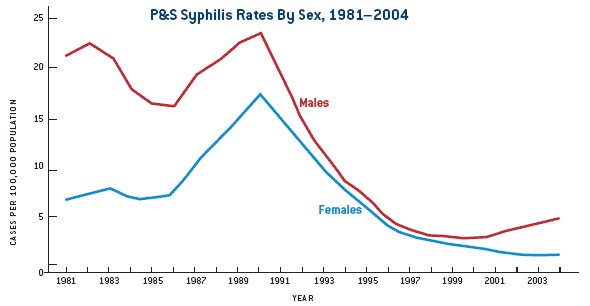Pre-War Era
Prostitution has long been blamed for the rapid spread of venereal diseases such as Syphilis and Gonorrhea. Eventually, measures were taken to have prostitutes registered and checked annually for these diseases. It was very hard for prostitutes to seek treatment in France during this period. Special wards were eventually setup in French hospitals for prostitutes separate from the rest of the patients (much like the hospitals had refused to admit or treat the first 'pox' victims). Prostitutes of this era were sometimes referred to as 'Treponema machine-guns'. Mercury was originally thought to cure the disease in the pre-war era. It would be administered either by rubbing it on the skin, ingesting it, or by fumigating the body. Mercury would be poured into a box where only the patient's head stuck out and a fire would be lit under the box, causing the mercury to vaporize, thereby "fumigating" the body. However, this was the least effective and most irritating for the patient to undergo. Other early techniques involved exposing the patient to the malaria virus because it was thought that high fevers killed the Syphilis virus. This was considered a good alternative since the malaria could later be treated with medication. This type of treatment, however, was reserved for patients in the later stages of the disease (most commonly Neurosyphilis).
War Era
By mixing populations, the First World War produced an endemic of Syphilis and its sexual sidekick, Gonorrhea. Unbelievable statistics of the time claim that there were anywhere from 700,000 to 800,000 new cases of the disease in France during this period. Propaganda soon hit the streets in the form of posters in both Europe and America. American troops were given training on not only how to protect their health but also their moral standards. In boot camp, fresh recruits were shown disturbing images of Syphilis and Gonorrhea wreaking havoc on the genitals. The most effective propaganda seemed to be those themed towards the soldiers going back home to their wives, mothers, and sisters physically fit and morally clean. Treatments using mercury were discontinued with the discovery of penicillin and its widespread manufacture after World War II. Most stages of the disease today can be treated with penicillin except in patients allergic to the drug (in which case they are treated with oral form of tetracycline).
Today
There are an estimated 12 million people with some stage of Syphilis worldwide. Disease incidence of syphilis decreased in the US throughout the 1990s and reached an all time low in 2000. However, the disease began to rise again only in males from 2000-2004. Of the new cases, 36 percent were related to Heterosexual transmission and the other 64 percent were from male homosexual transmission. Syphilis remains a public health problem in urban areas with high male homosexual populations. For the third consecutive year, San Francisco had the highest rate of the disease of any city in the US (45.9%). Syphilis, like many other STDs, facilitate the spread of HIV, increasing the transmission of the virus at least two to five fold.





